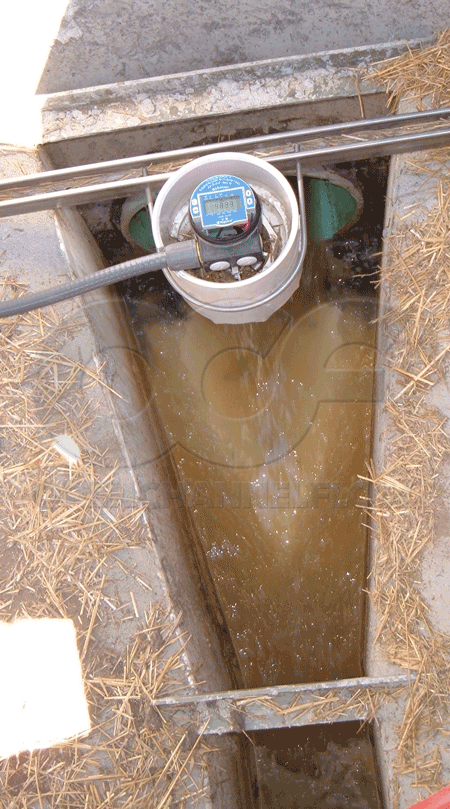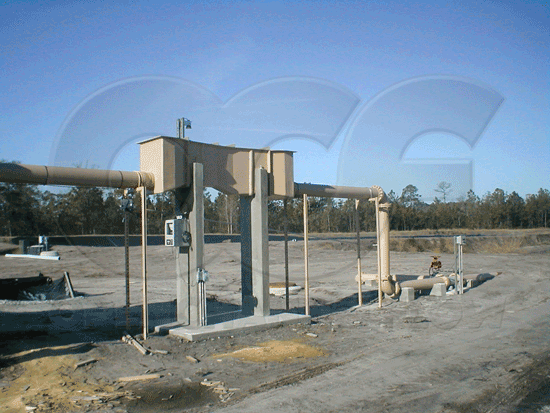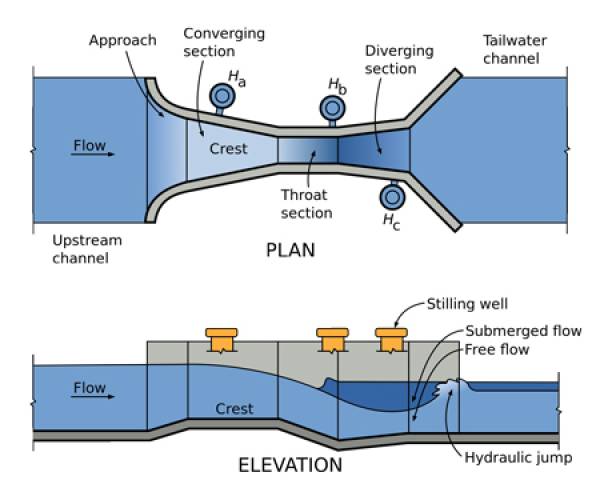This website uses a variety of cookies, which you consent to if you continue to use this site. You can read our Privacy Policy for
details about how these cookies are used, and to grant or withdraw your consent for certain types of cookies.
Parshall Flumes: Site Selection
Site selection should be viewed as only part of the requirements for a proper Parshall flume installation. While important, good site selection cannot overcome poor upstream or downstream conditions. In reading through the site selection criteria you will notice that many times the discussion verges into a discussion of flume size. This is not by accident. Frequently site selection is directly tied to flume size and vise versa.
Channel Location
As a general rule, in earthen channels, the width of the Parshall flume should be about one-third to one-half the width of the channel water surface at normal flows. This balances the need to accommodate anticipated flows while at the same time minimizing overall costs (flume plus installation).
For a given installation a variety of Parshall flumes may cover the anticipated flow rates, but it may be cheaper to install a larger flume with smaller wing walls than it is to install a smaller flume with much longer wing walls.
Channel Conditions
The flow at the site where the Parshall flume is to be installed should be free of turbulence, visible surging, unbalanced flow, or poor velocity pattern. Bends, dips, and elbows in the upstream channel create many of these conditions, so the flume should be sited far enough away for these conditions not to be present.
Piping, End Adapters, and Metering Manholes
In manholes or vaults, it is important to site the flume far enough away from the inlet of the structure so that an adequate transition can be formed into the flume. A Parshall flume should never be butted directly up to an incoming pipe. There is insufficient space in the inlet of a Parshall flume to properly distribute and transition the flow from a round pipe to a rectangular channel when this is done. Flow is, therefore, poorly distributed and is frequently turbulent. For this reason, end adapters have been developed for Parshall flume to aid in connecting them to piping.

An end adapter is a rectangular structure with sloping floor which attaches (or is molded) to the entrance / exit of a flume. The adapter provides an area to mount a pipe stub or flange to connection to piping and provide a means by which to transition, in a controlled manner, from a round pipe to the rectangular cross-sectional area of the flume (and back). The body of water formed in the inlet end adapter acts to help dampen the transition turbulence generated by going from a round pipe to a rectangular channel and helps to distribute the velocity profile of the incoming flow.
In applications where upstream conditions are suspect, inlet end adapter can also be provided with accessories to help condition the incoming flow, including: perforated baffle plates, energy absorbers, and flow straighteners.
Fiberglass flow metering manholes are another way of providing site flexibility. Here the Parshall flume is directly integrated into a fiberglass manhole to form a single watertight, corrosion-resistant structure. Flow is transitioned into / out of the flume through the use of end adapters. As a packaged unit, the manhole can now be placed anywhere along a pipe where flow conditions are acceptable. There is no need to try to accommodate the flume in an existing manhole or vault structure.
Potential Need to Elevate the Flume
Parshall flumes require a drop in elevation through the flume. Unless the site can accommodate this change in elevation naturally, either the downstream channel will need to be modified (not always possible) or the flume will need to be elevated above the channel floor.
If the flume is to be elevated above the channel floor, it is important to make sure that the upstream channel banks are high enough to contain the increased depth created by the installation and elevation of the flume. This change in upstream depth may necessitate that a flume larger than otherwise might be selected be used in order to reduce the increase in upstream depth cause by the installation.
Depending upon the flume size selected and the downstream conditions, the possibility of submergence may also require that a Parshall flume be elevated.
Access and Maintenance
While this may seem obvious, the site should be readily accessible by operators. For remote sites, this may mean access by car or truck; for plants it may be locating the flume where piping or other equipment.
Even in good installation, the flume is still need to accessed periodically as part of regular maintenance procedures, to calibrate a secondary flow meter, or to take a visual flow reading.

In smaller Parshall flumes the cross-sectional width of the flume at the point of measurement can be quite small so access and natural lighting can come into play when trying to make manual readings or flow meter calibrations.
Flow Meter Location
In siting a Parshall flume, some thought should also be given to the flow meter that will be used in conjunction with the flume and its particular requirements. Flow meters should be located as close as is practical to the flume so that one operator can both read level in the flume and then calibrate the flow meter.
Industrial applications are notorious for having a disconnect when it comes to flume and flow meter locations.
Often the desire to keep the flow meter away from prying eyes (and hands) means that the meter is located in a secure area away from where the flume is to be installed – requiring a considerable delay between the time one person can read the level in the flume and then calibrate the flow meter. When flow is present, any significant delay between the when a level reading is taken in the flume and when the flow meter is calibrated is likely to introduce errors. For batch discharge operations or where flows fluctuate, these errors can be significant.
Related Blog Posts
Explore more insights in our blog.

LOCATIONS IN ATLANTA, GA & BOISE, ID





